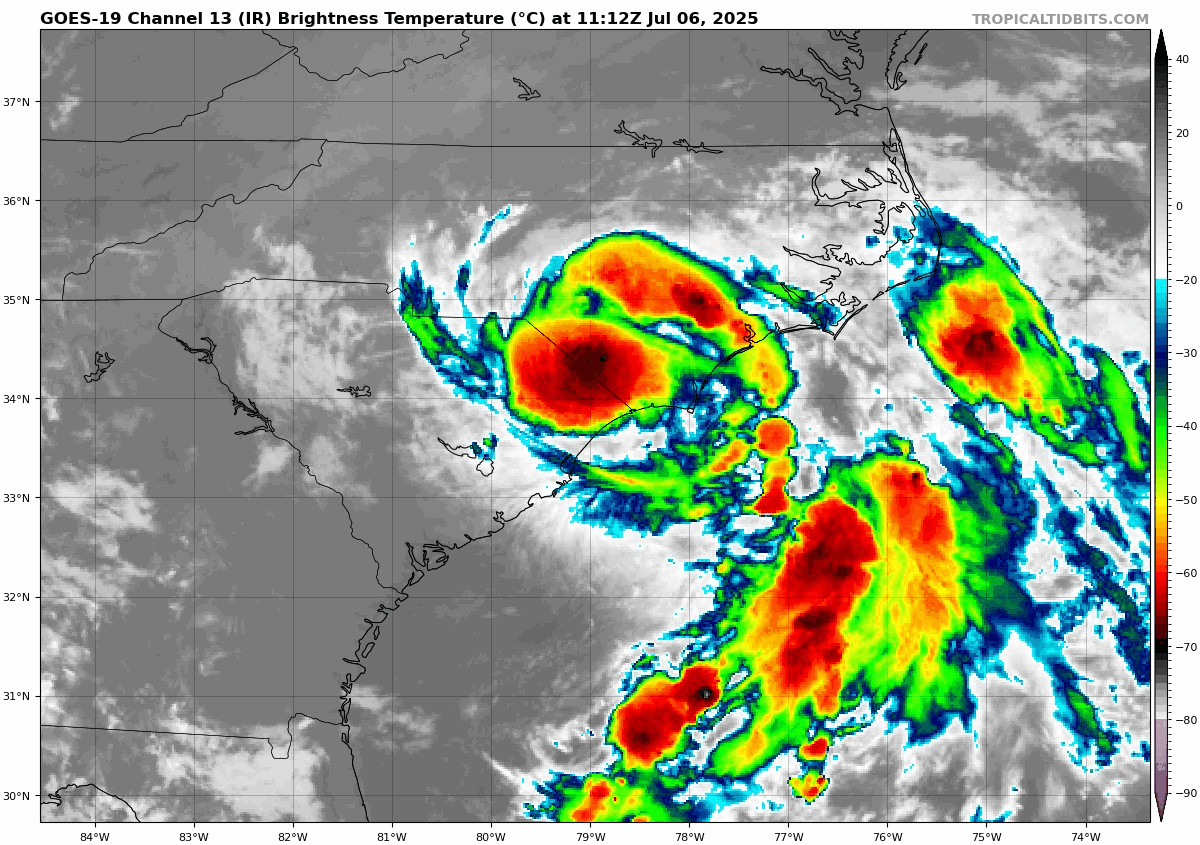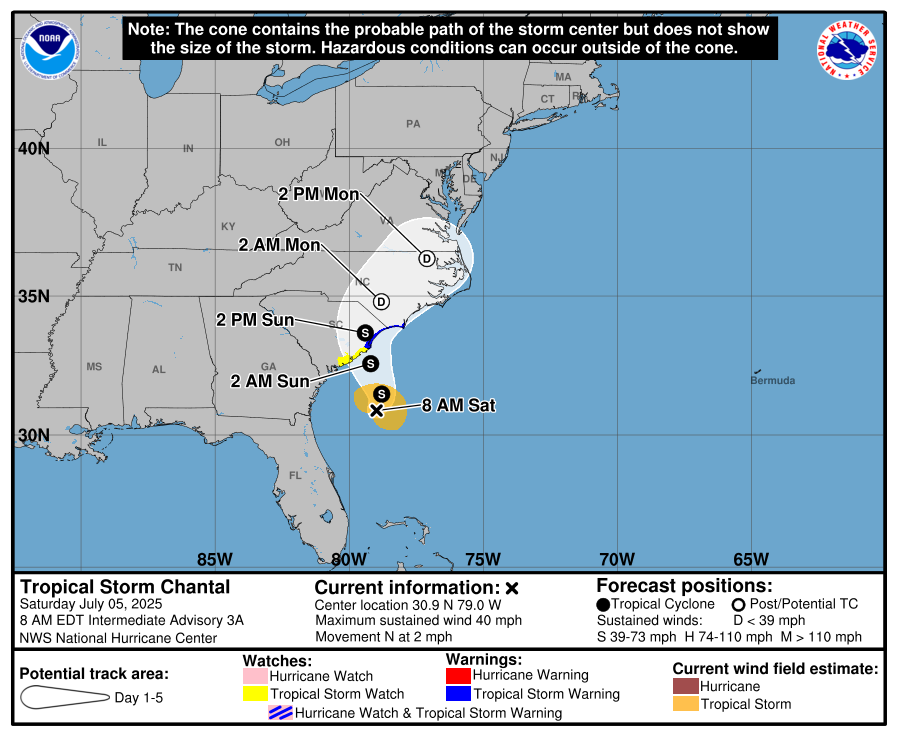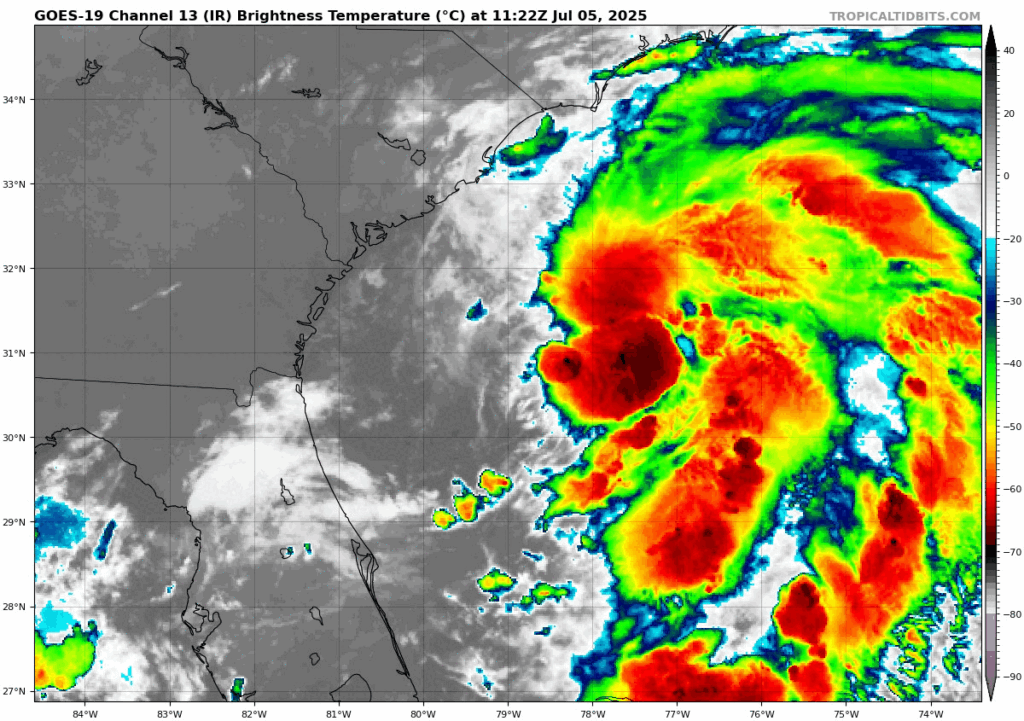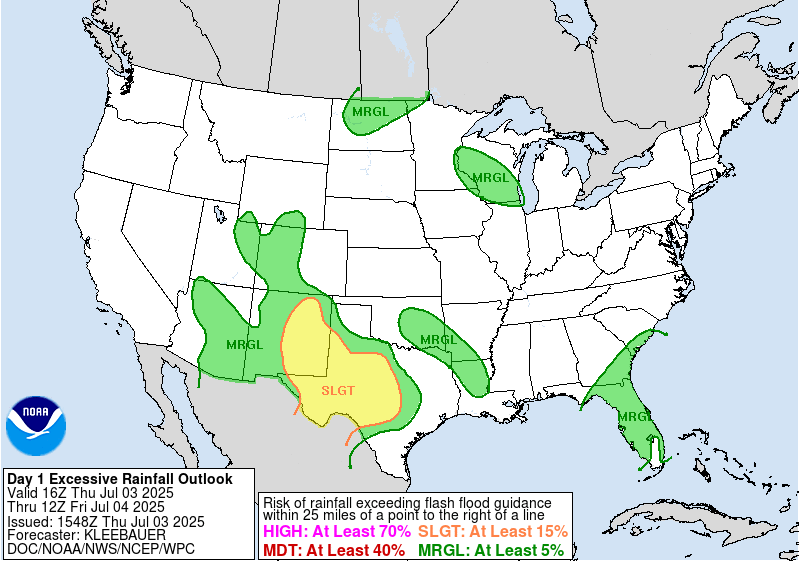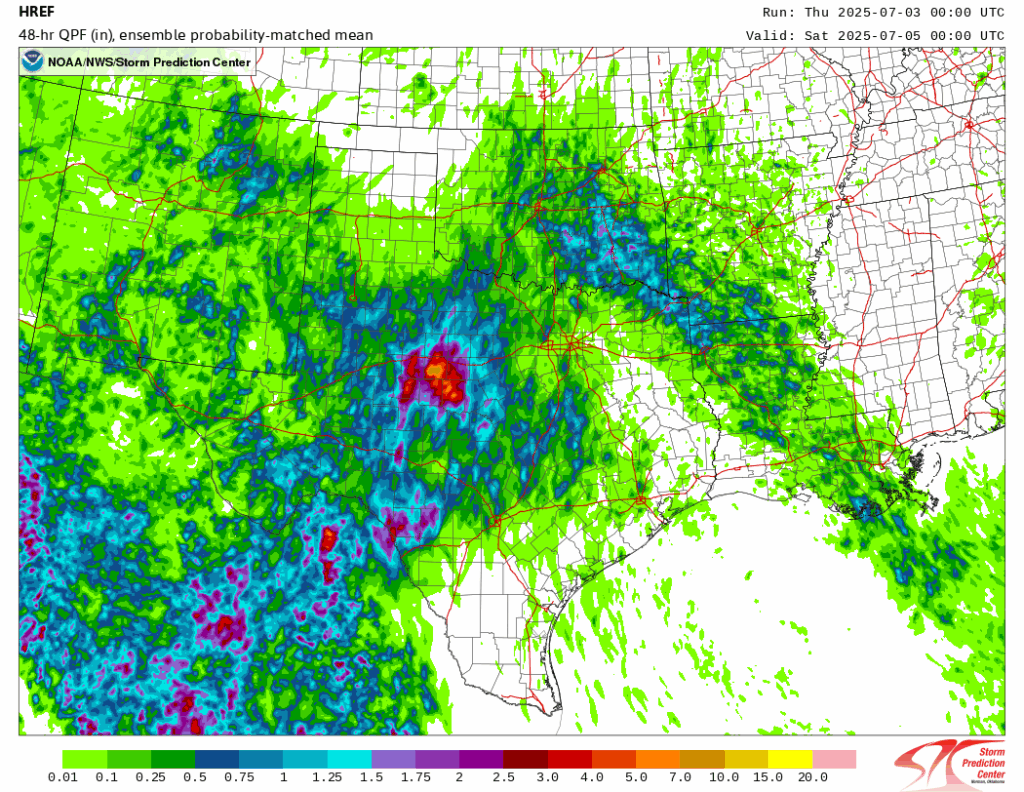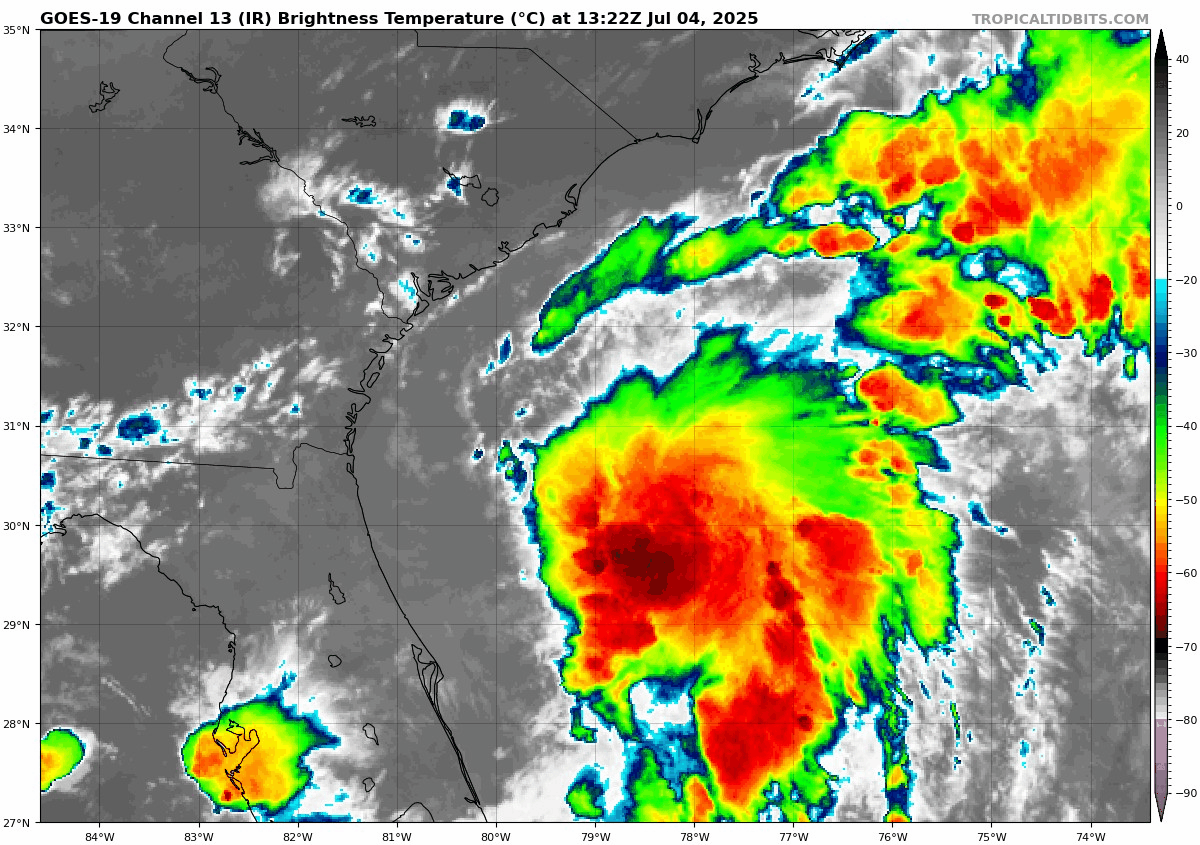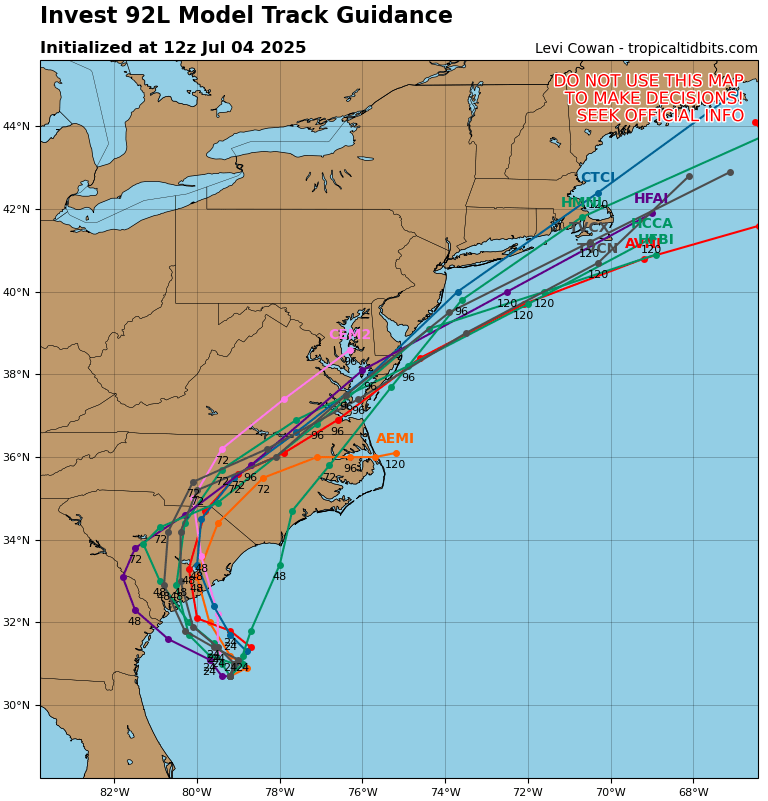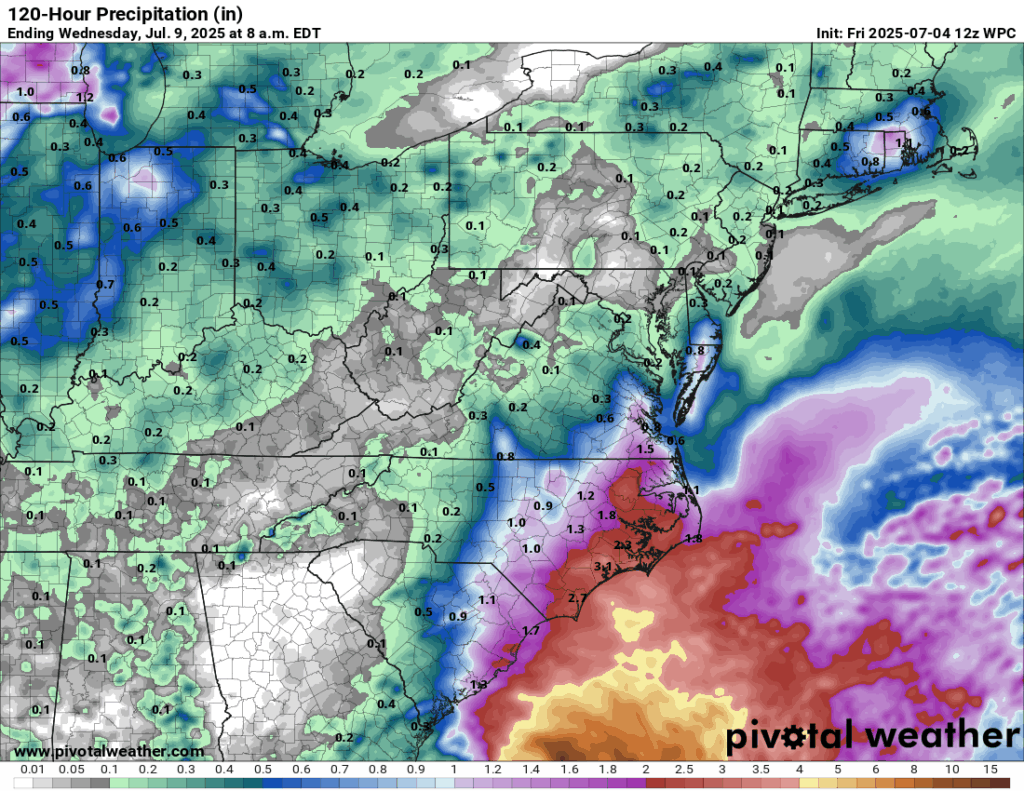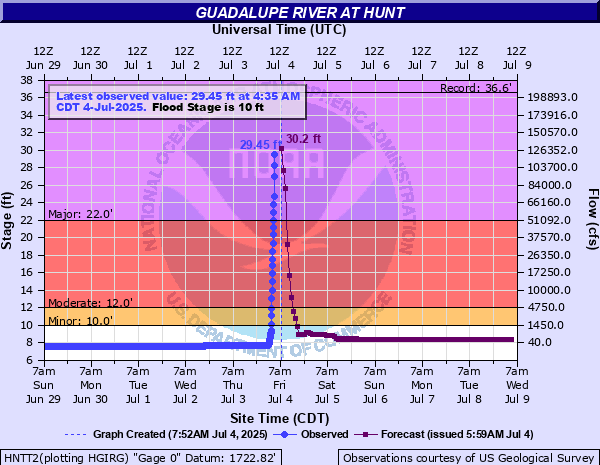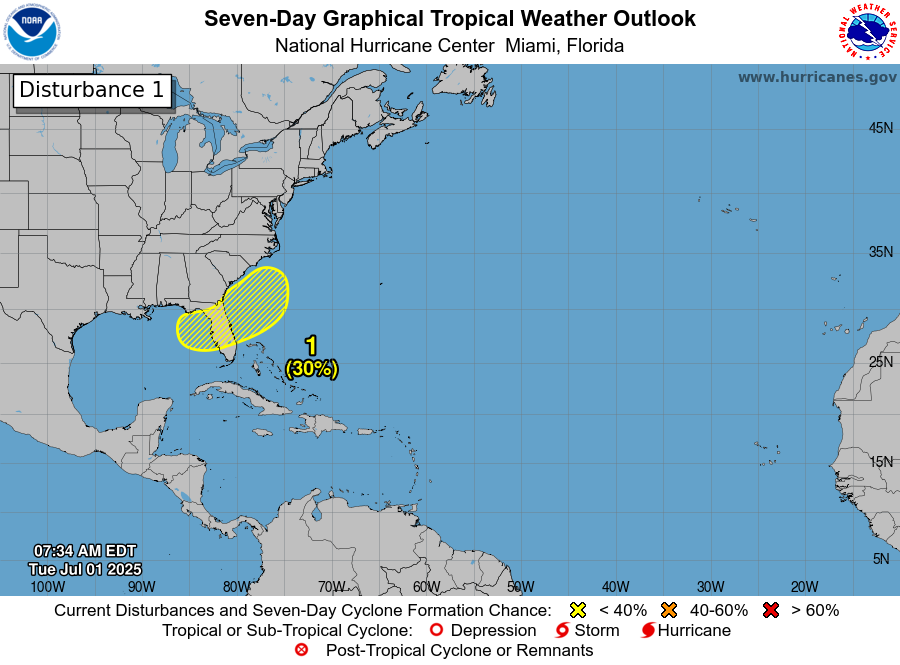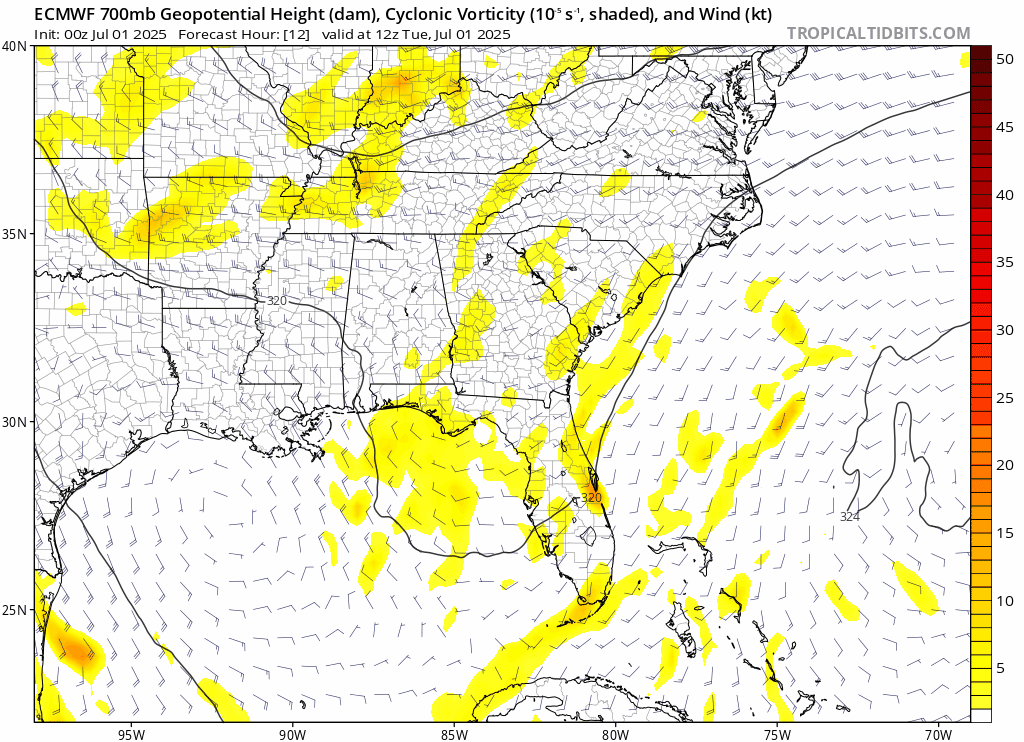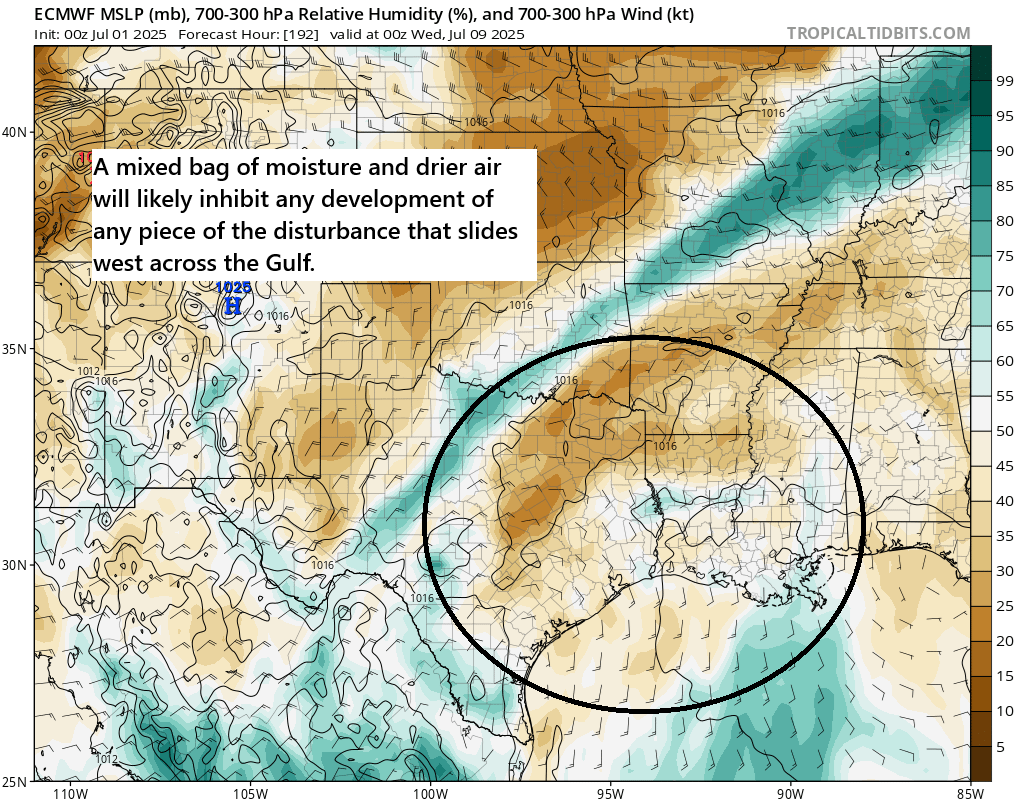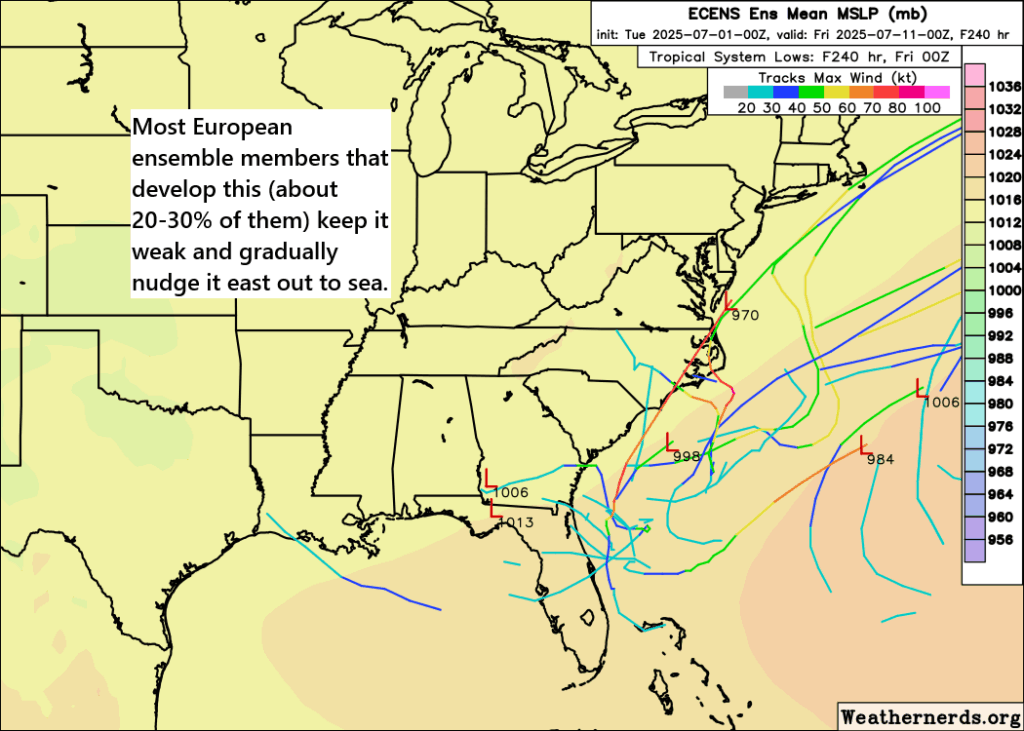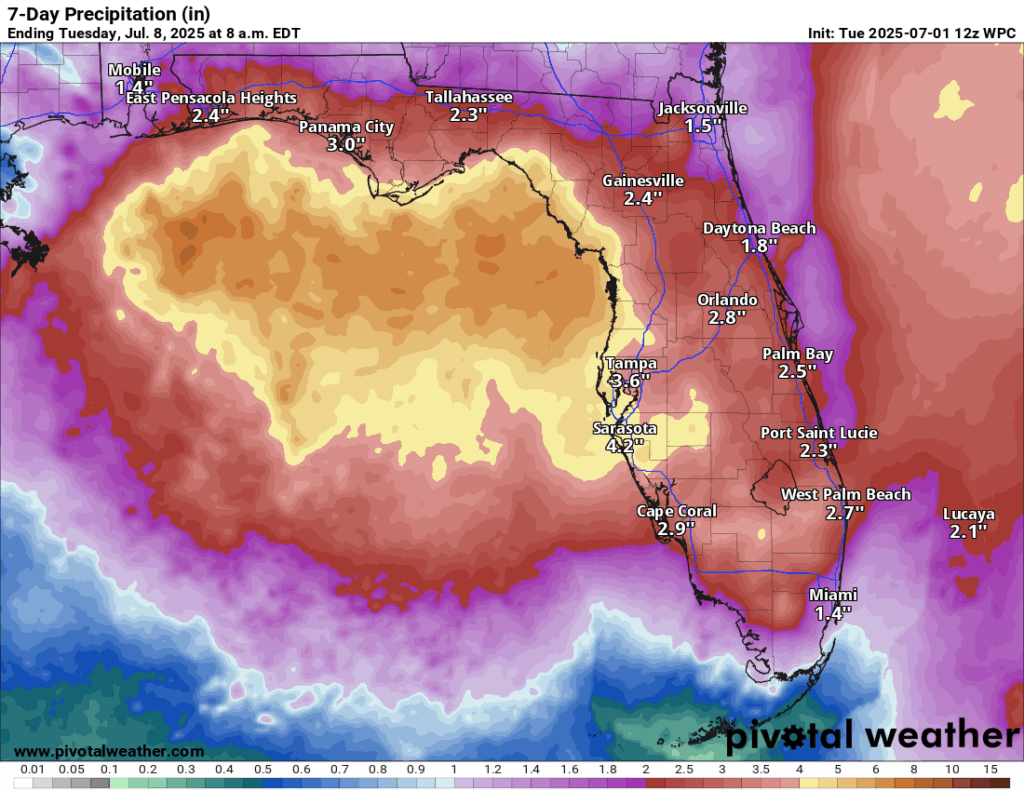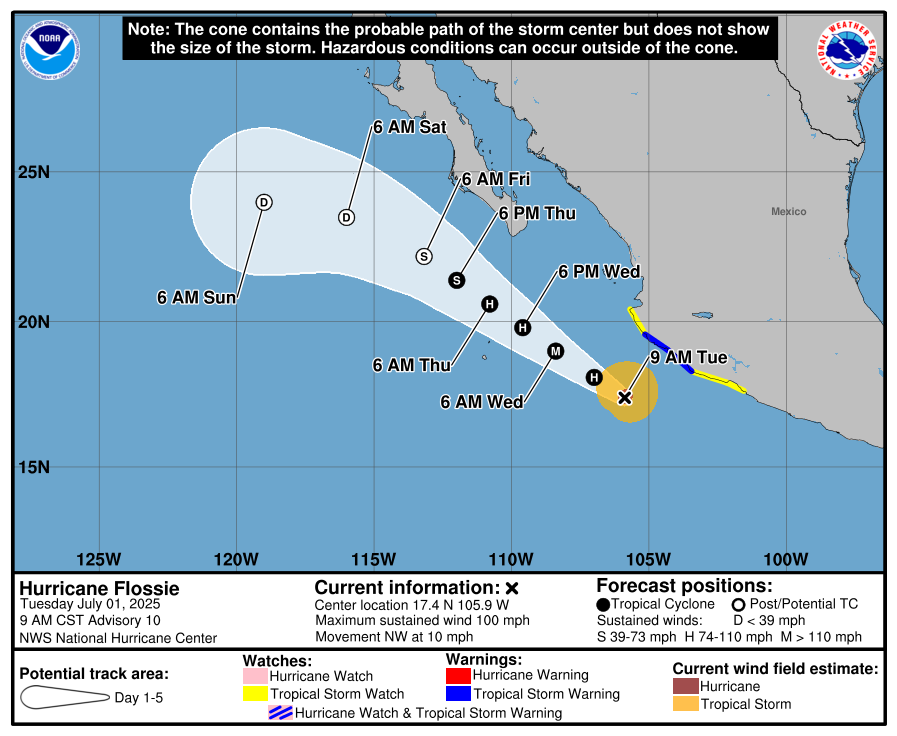In brief: After yesterday’s post on Texas, we wanted to raise a couple additional points after some reactions. Plus, TS Chantal made landfall near Myrtle Beach and is now a flooding threat for North Carolina.
Texas comments
There remains a lot to unpack still after yesterday. The reaction to our post covered a rather broad spectrum, and I just want to emphasize a couple points.
1.) We have been on record as saying the proposed budget cuts to NOAA would be disastrous. We’ve had people throwing that back at us and saying “Wait a minute…” The reality is that there are a handful of key ways the budget cuts will impact offices, alerts, and warnings. First, the primary current cuts have led to understaffing in many offices. Relative to other offices, the NWS office in San Antonio/Austin is fairly well off. For example, they currently have seven more full-time staff members than the neighboring Houston office.
They are missing the warning coordination meteorologist, who primarily focuses on building understanding of warnings on what we call “blue sky” days. That work gets done before tragedies occur. That position has only been vacant for a couple months, so it likely did not play a role here. But it will if it is not filled in the coming weeks.
But the office has most of their meteorologist positions filled, as well as most of their hydrologists. From the warning perspective in real time, this plus the timeliness of issued warnings is why I don’t believe staffing was an issue here.
2.) Weather balloon launch cuts probably had little to no impact on this specific forecast. Again, I want to emphasize that the launch of the evening balloon at Del Rio was crucial to understanding the potential severity of the event, and this emphasizes that fully funding and staffing NWS offices to be able to launch balloons is critically important. The takeaway here is that funding NOAA leads to better understanding of unfolding weather, forecast weather, and real-time decision-making.
3.) Weather model forecasts were imperfect ahead of time, but as the event closed in, they performed as designed and did better. Why is this? Because of NOAA-led research. The HRRR and HREF models have been instrumental in improving our understanding of localized (or mesoscale) forecasts like this. We have a long way to go to perfect those forecasts, but they more often than not do their job in guiding the horses (meteorologists) to water. How will we improve those guidance tools more? By fully funding NOAA research. How will we reduce false alarms during potential high impact weather? By fully funding NOAA research. It comes back to that in the end.
4.) We need to understand the limits of predictability in these scenarios. Models often tell us about the potential for a high-end event. But in Texas in particular the specific placement of a high-end event is extremely tough to pin down. A few miles makes a world of difference, and I think it’s evident that we need to build some pad into rainfall forecasts beyond what we’re currently doing. These are works that are accomplished by having NWS meteorologists working together with local emergency managers to help improve knowledge and refine trigger points for warnings. Again, this points back to fully funding and staffing NOAA and NWS offices to accomplish this critical work. The private sector cannot fill this gap at all.
For the families dealing with unimaginable tragedy right now, none of this matters. They deserve time, privacy, and space to grieve. But for those not directly impacted, it’s important for us to push this dialogue to try to play a small part in our broader understanding of the problems and realities. And it’s important to do it immediately because those on the outside have short memories. But I again want to share our condolences to all those affected in some way.
Tropical Storm Chantal
Chantal made landfall earlier this morning near Myrtle Beach as a fairly spicy little tropical storm with winds of about 50 mph. We had a handful of gusts to 48, 54, and 56 mph between Bald Head Island in North Carolina and Murrells Inlet just south of Myrtle Beach, SC.
The main threat going forward from Chantal will be heavy rainfall. Flood Watches are now posted for the Piedmont in North Carolina and include Raleigh, Durham, and the Triad, as well as Fayetteville and Goldsboro to the south and east. Model forecasts suggest an average of 1 to 4 inches of rain, but depending on exactly how quickly Chantal pushes northward and weakens, there could be isolated pockets of 4 to 6 inches in spots, leading to some more serious flash flooding.
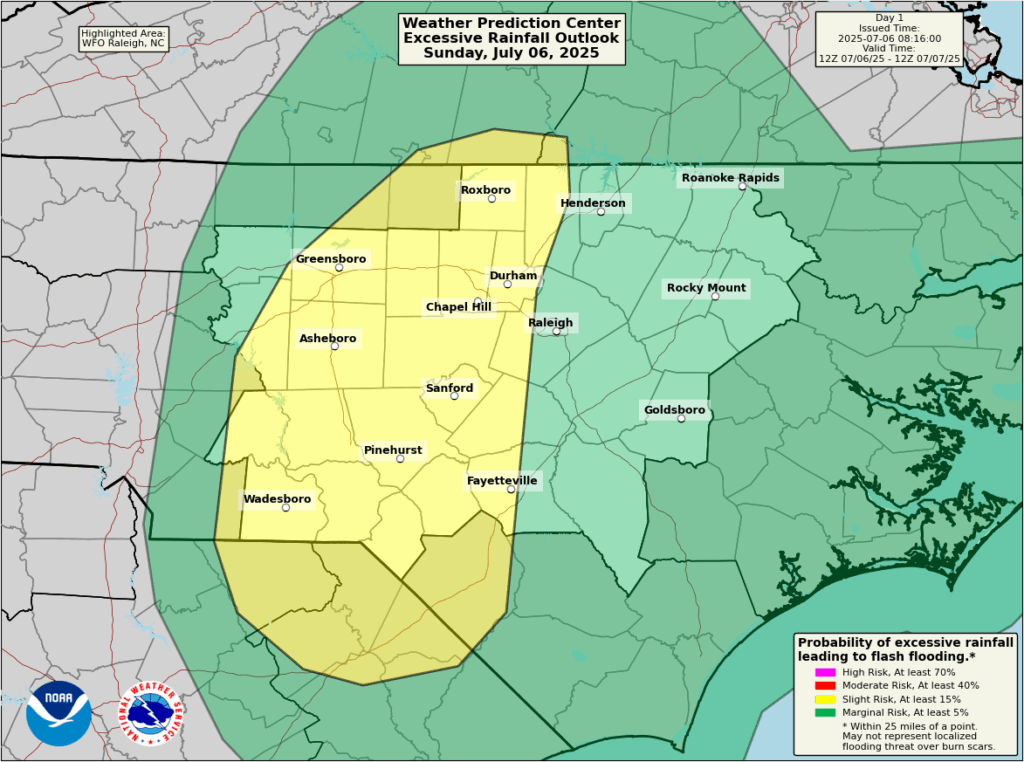
Given what has happened lately, I think it would be important for folks in central North Carolina, particularly in flood-prone areas to be acutely aware of conditions through the day.
Chantal will dissipate over North Carolina later today, but some locally heavy rainfall could extend north into parts of Virginia, Delmarva, or even southern New Jersey tonight and tomorrow.
We don’t see anything else on the horizon right now in the Atlantic, but as always we’ll keep watching.
Housekeeping reminder
A lot of you have reached out to request ways to support our work beyond just reading, and we have (to this point) resisted that, other than various small sponsorships last hurricane season. And we are grateful for the interest many potential sponsors have shown this year too! However, we are going to try something else this year: subscriptions.
To be abundantly clear, our daily content will remain free, never paywalled, and that is not going to change as long as we operate this site. So, forever. This year, however, we will give readers who wish to support the site the option to do so at a modest cost, as well as a premium option for people who want a little bit more access. We will have more information on this soon.
The first step in this process is to migrate our email newsletter over to the Substack platform. If you currently subscribe to The Eyewall via email, your email should roll over to our Substack without you having to do anything. We understand a few people have various concerns about the Substack platform, and some of the content posted there by other writers. If you decide to unsubscribe from emails, we understand. But the benefits of this route outweigh the potential costs. The primary issue is that WordPress caps our email subscribers, and the process to manage an account is not user-friendly. For a site with a limited budget such as ours, this is the best way to ensure the continued delivery of an email newsletter with our content. We will still continue to post here at The Eyewall.com, but updates will not be sent via email from here.
Also: Nothing at all is changing with Space City Weather. So for our Houston readers, our site, email, and annual fundraiser is not changing! This only applies to The Eyewall.
Our target date for this migration of The Eyewall newsletter to Substack is tomorrow, Monday, July 7th. We hope that this will offer us the flexibility to do more things, offer more options, more content, and a better overall user experience as time goes on. Thanks for your support!
